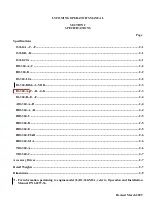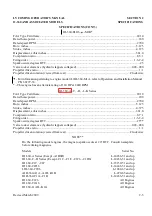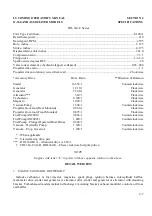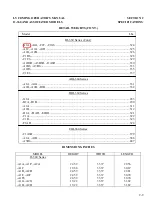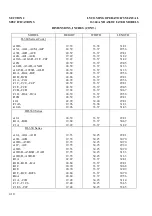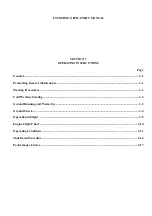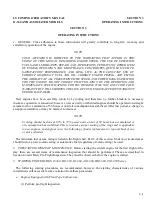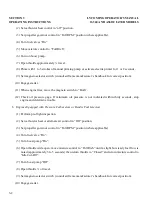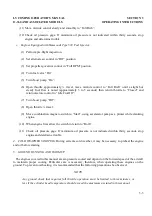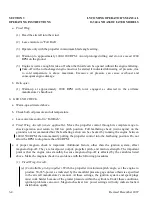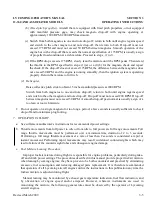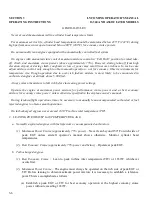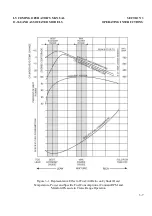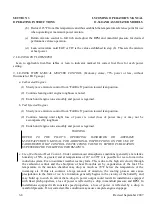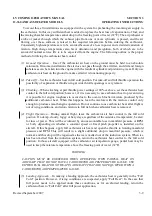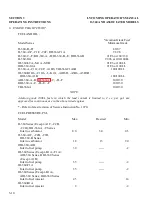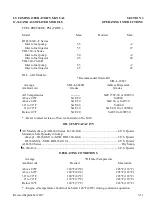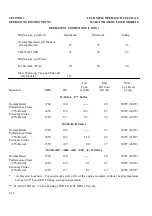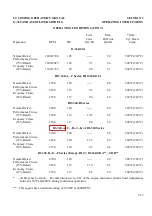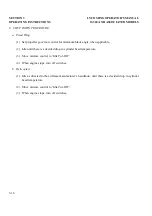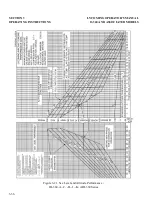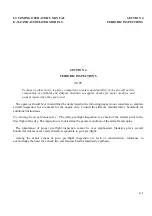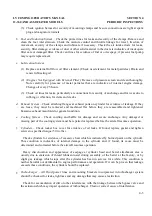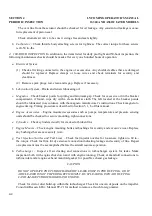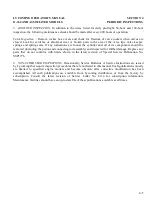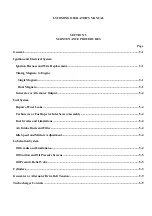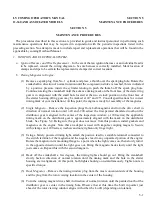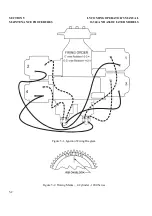
LYCOMING OPERATOR’S MANUAL
SECTION 3
O-360 AND ASSOCIATED MODELS
OPERATING INSTRUCTIONS
To avoid this, all installations are equipped with a system for preheating the incoming air supply to
the carburetor. In this way sufficient heat is added to replace the heat loss of vaporization of fuel, and
the mixing chamber temperature cannot drop to the freezing point of water (32°F). The air preheater is
a tube or jacket through which the exhaust pipe from one or more cylinders is passed, and the air
flowing over these surfaces is raised to the required temperature before entering the carburetor.
Consistently high temperatures are to be avoided because of a loss in power and a decided variation of
mixture. High charge temperatures also favor detonation and preignition, both of which are to be
avoided if normal service life is to be expected from the engine. The following outline is the proper
method of utilizing the carburetor heat control.
(1) Ground Operation –
Use of the carburetor air heat on the ground must be held to an absolute
minimum. On some installations the air does not pass through the air filter, and dirt and foreign
substances can be taken into the engine with the resultant cylinder and piston ring wear. Only use
carburetor air heat on the ground to make certain it is functioning properly.
(2) Take-Off –
Set the carburetor heat in full cold position. For take-off and full throttle operation the
possibility of expansion or throttle icing at wide throttle openings is very remote.
(3) Climbing –
When climbing at part throttle power settings of 80% or above, set the carburetor heat
control in the full cold position; however, if it is necessary to use carburetor heat to prevent icing
it is possible for engine roughness to occur due to the over-rich fuel/air mixture produced by the
additional carburetor heat. When this happens, lean the mixture with the mixture control only
enough to produce smooth engine operation. Do not continue to use carburetor heat after flight is
out of icing conditions, and return mixture to full rich when carburetor heat is removed.
(4) Flight Operation –
During normal flight, leave the carburetor air heat control in the full cold
position. On damp, cloudy, foggy or hazy days, regardless of the outside air temperature, be alert
for loss of power. This will be evidenced by an unaccountable loss in manifold pressure or RPM
or both, depending on whether a constant speed or fixed pitch propeller is installed on the
aircraft. If this happens, apply full carburetor air heat and open the throttle to limiting manifold
pressure and RPM. This will result in a slight additional drop in manifold pressure, which is
normal, and this drop will be regained as the ice is melted out of the induction system. When ice
has been melted from the induction system, return the carburetor heat control to the full cold
position. In those aircraft equipped with a carburetor air temperature gauge, partial heat may be
used to keep the mixture temperature above the freezing point of water (32°F).
WARNING
CAUTION MUST BE EXERCISED WHEN OPERATING WITH PARTIAL HEAT ON
AIRCRAFT THAT DO NOT HAVE A CARBURETOR AIR TEMPERATURE GAUGE. USE
EITHER FULL HEAT OR NO HEAT IN AIRCRAFT THAT ARE NOT EQUIPPED WITH A
CARBURETOR AIR TEMPERATURE GAUGE.
(5) Landing Approach –
In making a landing approach, the carburetor heat is generally in the “Full
Cold” position. However, if icing conditions are suspected, apply “Full Heat”. In the case that
full power needs to be applied under these conditions, as for an aborted landing, return the
carburetor heat to “Full Cold” after full power application.
Revised September 2007
3-9

